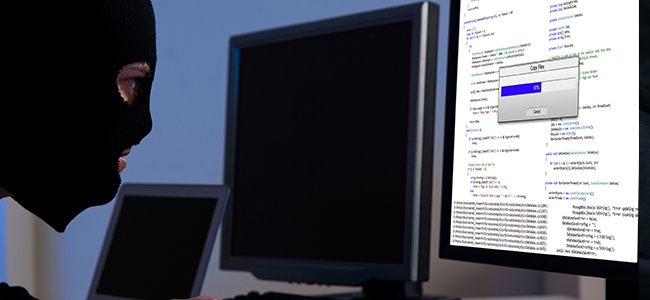
Hacking is a process performed by malware authors to attack a computer system or a network. The person who is involved in the hacking process is known as a hacker. Hackers find a way to gain unauthorised access and therefore take complete control over the computer network security systems. It alters the existing security features of the computer system to enable the malware to enter the network without the consent of the user.. The attack may be from simple to complex – it all depends on the intention of the hacker. Hacking can also be done to perform non-malicious activities. Hackers implement a number of methods to perform hacking.
Vulnerability scanner: It scans the systems to understand if there are any vulnerabilities.
Cracking Password: Hackers deploy different methods to identify and crack the password and therefore gain accesses to confidential data which the user assumes to be password protected.
Sniffing Packets: When data is transmitted, they are sent in packets. Hackers capture these data packets to gain access to the data when transmitted over networks.
Spooking: hackers create malicious websites which looks more similar to legitimate sites, users get convinced and they treat such malicious sites as trusted ones. This way the hacker enters the user’s computer network while the user is not aware of the reality.
Rootkit: Malware authors create a combination of malicious programs to take control of the user’s operating system.
Trojan horse: It creates a backdoor for the hackers to sneak into the users computer system to allow the cyber thieves to gain illegal access to the system
Viruses: Viruses are created by malware authors to self-replicate and multiply the malicious copies of the viruses. These are then programmed to get inserted into executable files and programs which then infects the system.
Key loggers: Malware authors create backdoors through malicious methods to record every keystrokes of the user on the infected system which can retrieved later.
There are some organizations that employ ethical hackers to identify and keep them alert on any security flaws in the company’s security system.. By this way organizations are much ahead of hackers and hence prevent identity theft and malicious infections.
How to prevent Hacking attempts
Hackers are perpetually seeking ways to attack and rip down the computer network with novel and sophisticated approaches of hacking methods and techniques to cause massive security breaches.
Following are recommended to help users deny or defend hackers and hence prevent them from infecting their laptops, PCs, Smartphones and other devices
Enable automatic security updates
The most simplest way to avoid malware infection is by configuring the systems and other devices to ensure software updates instantly. Hackers find a way into the system – by identifying any bugs in the security system. By this way malware authors take control of the system, by exploiting the vulnerability of the software. Therefore it is highly recommended to update the security software at regular intervals.
Implementing two factor authentication
Hacking can be prevented by a combination of preventive measures. Two-factor authentication can be used to stay ahead of attacks. Two factor authentication is a two step process. A one time password is sent to the registered mobile number or email address which has to be used by the user within a limited time frame, beyond which the password expires. By this way the password goes ineffective even when the hacker cracks the password, as the password will not be valid and it would been already expired.
Ensure to uninstall unused software and update security patches
Hackers find new approaches to break into your system. They identify bugs and weaknesses in the system and try ways and methods to exploit the loop holes and gain access to the confidential data of the system. It is good to un-install unused software and update the software with security patches on a regular basis.
Beware of Phishing mails
Attackers use genuine looking emails as a bait to trick users to click on a link or attachment in the email, while the attacker gain access to your personal information, install malicious code or sometimes take control of the entire system. Pay attention, have a closer look, so you will get cues that the email is illegitimate.
Ensure to use Strong Passwords
Implement the use of complex passwords that has a combination of letters, numerals and special characters. Avoid using personal information in passwords like date of birth, child’s name or even spouse name.. Hackers are more equipped to crack such passwords. Also refrain from using the same passwords across all accounts.
Use an effective security system
Install an effective virus protection like Comodo Internet Security that has a combination of ground-breaking security features like antivirus, firewall, Default deny technology, containment technology, and so many other security features. Choosing the right virus protection software is critical to keep your device and data safe and secure.
Related Resources
Antivirus Software


 (16 votes, 4.19 / 5
(16 votes, 4.19 / 5

